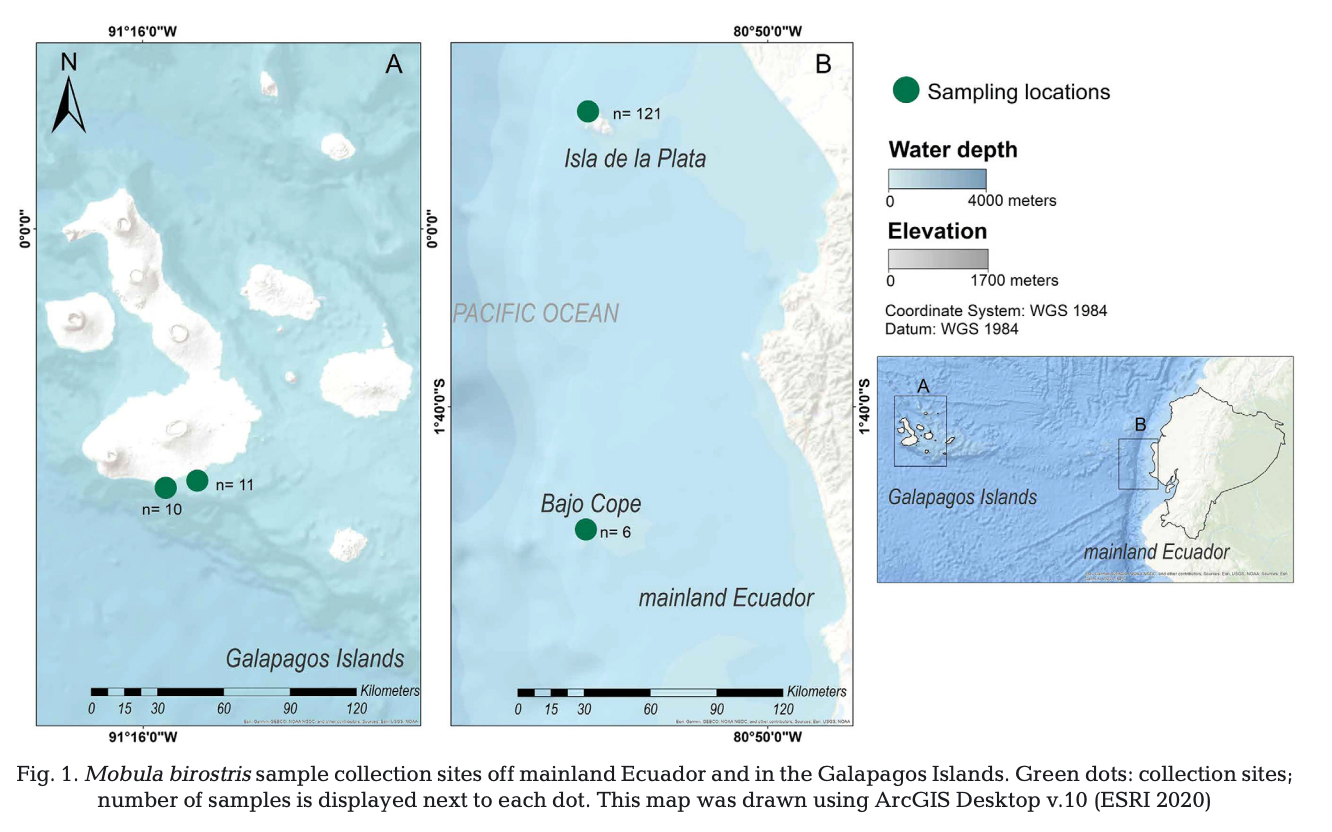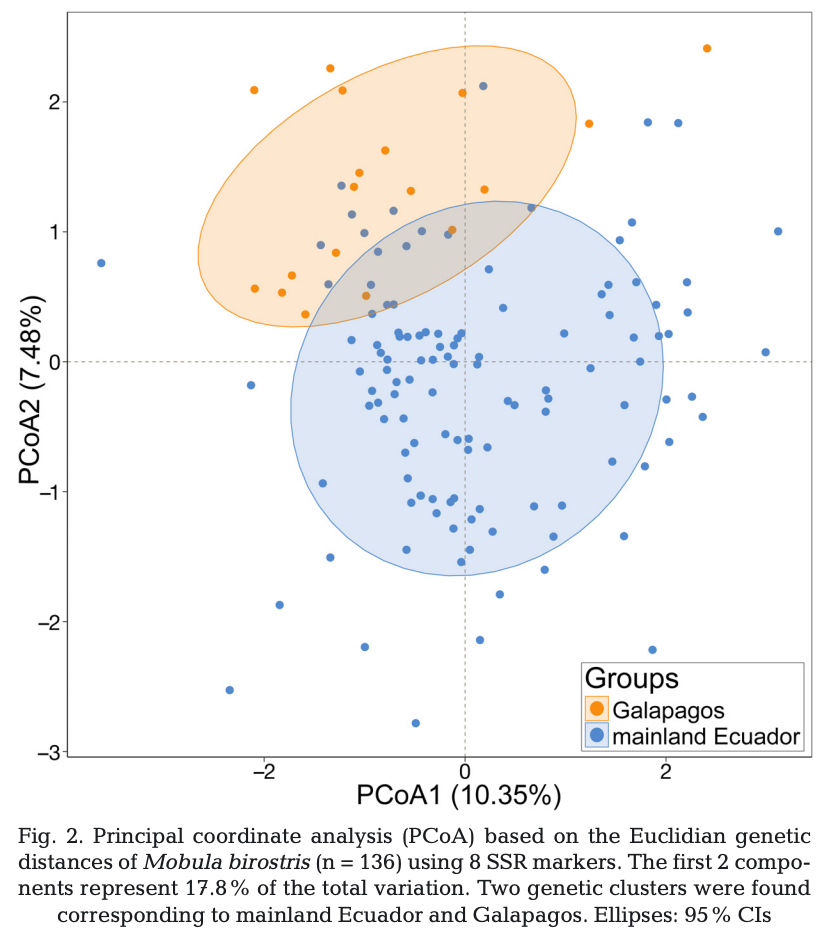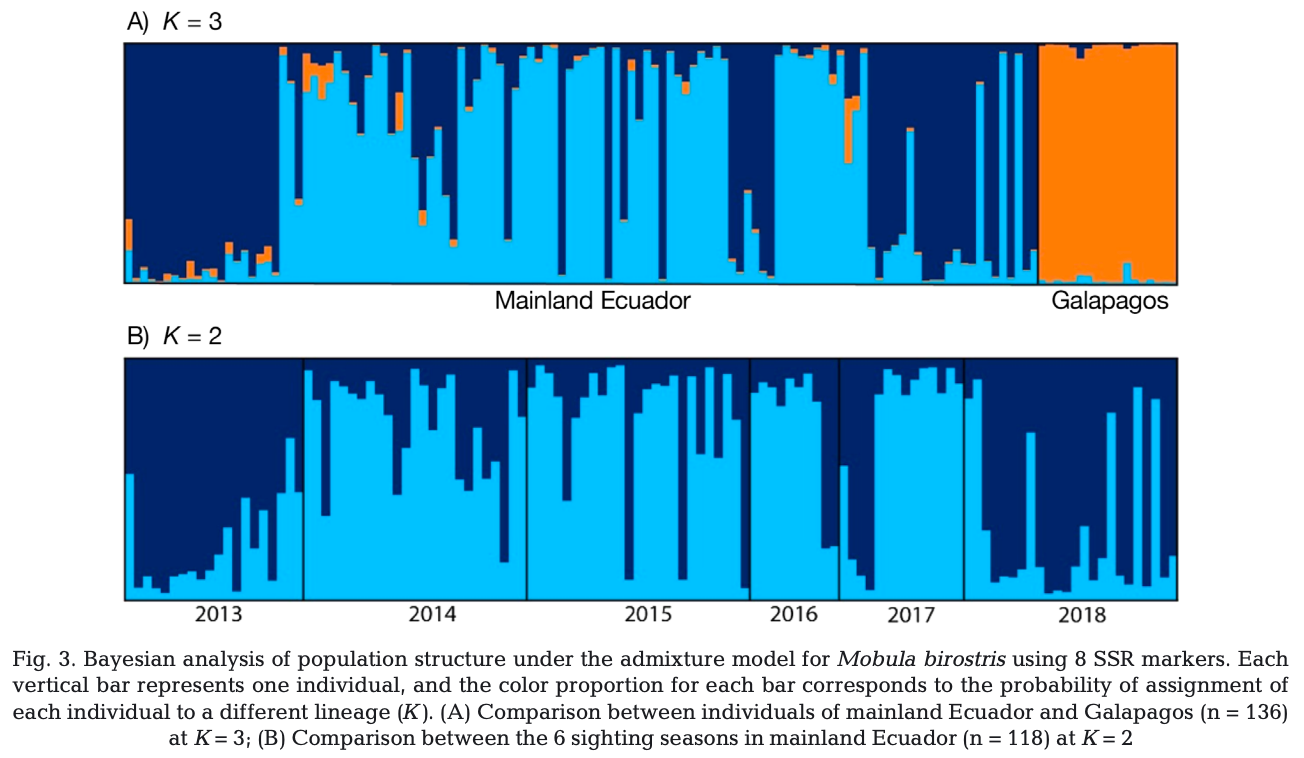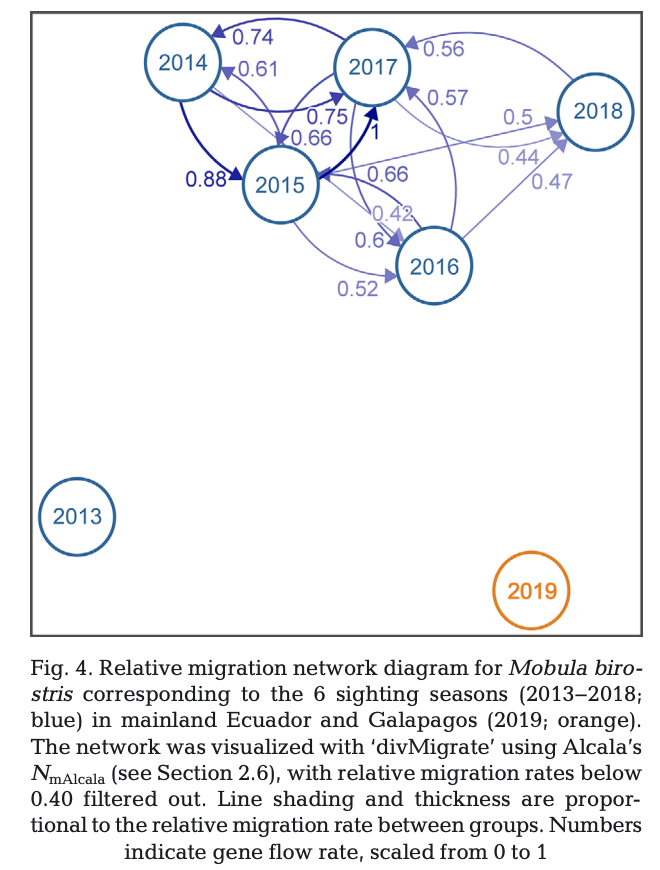Exploring the genetic diversity and population structure of Mobula birostris in two key aggregation zones in the Eastern Tropical Pacific
October 2022
Karla E. Rojas López, Juan José Guadalupe, Milton Gordillo-Romero, Andrea Montero-Oleas, Diana A. Pazmiño, Michel Guerrero & Maria de Lourdes Torres
Keywords: Genetic Variability • Population Structure • Conservation • Residency Patterns • Ecuador • Mobula birostris




Summary: This study aimed to determine the genetic diversity and population structure of the oceanic manta ray in key aggregation sites in Ecuadorian oceanic waters to aid in its conservation and management. Results showed moderately high genetic diversity in both mainland Ecuador and the Galapagos Islands, with two different populations identified. Low gene flow between the locations suggests that there is not a single panmictic population in Ecuador. These findings provide valuable information for the conservation of the Endangered species, which has been understudied in the Eastern Tropical Pacific.
Abstract
“The giant manta ray Mobula birostris is the largest ray species in the world. Little is known about its genetic composition in key aggregation sites such as the Galapagos Islands and Isla de la Plata, near the province of Manabi in mainland Ecuador. This study aimed to determine the genetic diversity and population structure of M. birostris in these 2 locations to better understand its connectivity and distribution in Ecuadorian oceanic waters and to assist in its conservation and appropriate management. A total of 127 samples from mainland Ecuador (2013-2018) and 21 samples from Galapagos (2019) were collected and analyzed using 8 microsatellite loci. Results showed a moderately high level of genetic diversity for giant manta rays from both sites (mainland Ecuador He = 0.72; Galapagos He = 0.66). Population structure analyses suggests the presence of 2 different populations in the Galapagos and mainland Ecuador. The different genetic compositions found for each location could be associated with the displayed resident behavior, linked to the formation of upwelling systems caused by oceanic currents that bring nutrient-rich waters to both sites year-round. Our genetic connectivity analysis confirmed low gene flow between these 2 locations, further rejecting the hypothesis of a single panmictic population of M. birostris in Ecuador. Taken together, these results provide valuable information about the genetic composition and diversity of the giant manta ray, an Endangered species which has been scarcely studied in the Eastern Tropical Pacific.”
Author Affiliations
Laboratorio de Biotecnología de Plantas (COCIBA), Universidad San Francisco de Quito (USFQ), Diego de Robles y Vía Interoceánica
Instituto Biosfera, Universidad San Francisco de Quito (USFQ), Diego de Robles y Vía Interoceánica
Galapagos Science Center, Universidad San Francisco de Quito and University of North Carolina at Chapel Hill
Fundación Megafauna Marina del Ecuador, Proyecto Mantas Ecuador
Funded by
Universidad San Francisco de Quito
Instituto Biosfera, Universidad San Francisco de Quito

